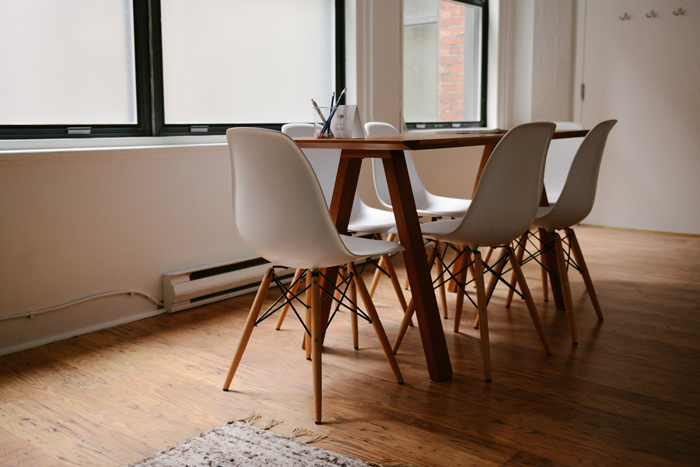Presenting was one of the most important skills mentioned in our most critical soft skills round-up, so I’ve put together a few ideas to help you kick more butt on your next one. Cause, you know, butt kicking is good. Do right by all us designers in the world. Make us proud! 😉 (There’ll be more tips in the coming weeks.)
Do you ever get a huge wave of nerves hitting just before a big presentation? For me, it usually arrives as a rush of anxiety about 10-30 minutes before starting, and fades by the time things actually get started. Once I get talking, I remember, hey, I know how to do this. I’ve done this before. I’m great at this! But 15 minutes before that I’m much more sure I’m going to fall on my face. 😉
Here’s three things that have worked for me to calm my nerves, feel prepared, and get more out of UX presentations.
1. Power poses before you begin!
If you haven’t heard of power poses, you’re in for a treat. It turns out that the way that you hold your body actually influences how you feel. The cool thing that comes out of this is—you can influence how you feel by holding your body in certain ways.
So the next time you feel nervous, afraid, insecure, unworthy or the next time imposter syndrome kicks in right before a big meeting… make a quick bathroom trip and spend a minute or two in V-pose. Or try out your best Wonder Woman. After you see the change in how you feel, you might want to try out one of these power poses in the meeting itself! Check out the full TED talk for more details:
For presenting UX, especially to large or high profile audiences, you need all the confidence and huzzpah you can get!
2. State your target user and their goals (And have one.)
A clear reminder up front of who you’re designing for helps keep everyone focused on why you’re all together. It might seem obvious that an important part of presenting UX is talking about users, but it’s really easy to slip into skipping it or assuming everyone is on the same page. Most of the time, we develop slightly independent ideas of who users really are, though, and they start to more and more resemble ourselves with time. 😉
Part of being user-centered is regularly centering our thoughts on users, but it’s oh-so-easy to get out of the habit. So picking set times to bring up a user in your process can help fight off the entropy. The beginning of a design discussion is a perfect time to meditate on that core purpose.
Bonus tip… have a target user in the first place!
If you don’t already have some well-established personas or user types, consider getting started. This case study offers a pretty interesting take on it: https://uxmag.com/articles/using-proto-personas-for-executive-alignment
3. Don’t forget something to take notes
Nothing sets me off my game than starting a presentation, receiving some great feedback, and realizing I forgot to bring something to write it down. Ugh! If possible, try to get a colleague to help with notes in this situation, but the best thing is to come prepared.
I like to use a printed copy of any slides or docs I’m presenting, so I can write directly on it. That way when flipping through the notes I can replay the meeting in my head. I can also move away from the computer more easily while presenting, and make special note of post-meeting to-dos.
You can take notes on your laptop as well, which can help if storing them in the cloud and accessing them from anywhere will be important later. I find that I get flustered and distracted by typos while presenting, and I also remember things much better when I write them down. So I personally prefer to take written notes while presenting, although I often take digital notes in other people’s meetings. ;-] It’s also easier to share a copy with them that way.
This system is too much for me personally, but here’s some note-taking porn for all you organized geeks out there: The Bullet Journal
For more ways to up your game at presenting UX, check out this awesome article and checklist by Nathan Long, complete with do’s and don’ts: Tactics for a Successful Design Presentation.
The Ladies in Tech podcast also has an awesome series where many conference speakers shared tips. It appears to be on hiatus, but the episodes there are very useful, practical, and interesting to people of both genders. Definitely check them out.
What’s your favorite hack to prepare for a UX presentation?


